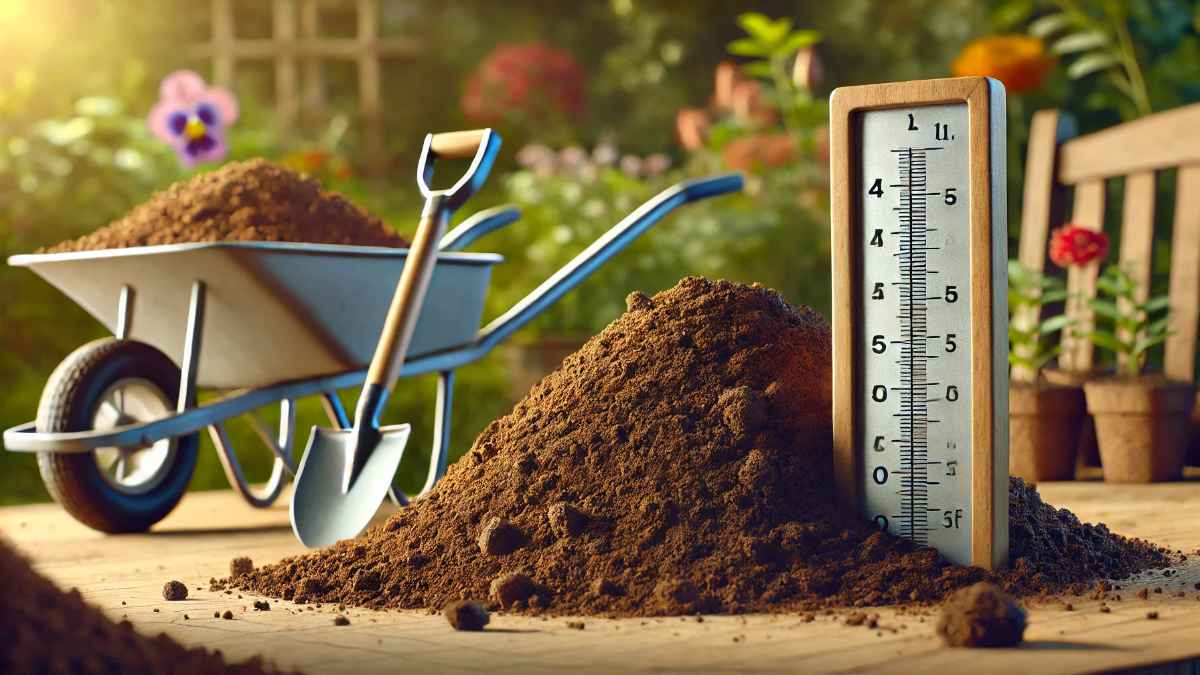Introduction
When working on landscaping, gardening, or construction projects, knowing the volume of soil needed is essential. One common question is: 40 pounds of dirt is how many cubic feet? The answer depends on various factors, including soil type, moisture content, and compaction. In this guide, we’ll break down the conversion, discuss influencing factors, and provide practical tips.
Understanding Soil Density and Volume
What is Soil Density?
Soil density refers to the mass per unit volume, typically measured in pounds per cubic foot (lbs/ft³). Different types of soil have different densities:
| Soil Type | Density (lbs/ft³) | Approximate Volume for 40 lbs |
|---|---|---|
| Dry Loose Topsoil | 75-80 | 0.5 – 0.53 cubic feet |
| Compact Topsoil | 80-100 | 0.4 – 0.5 cubic feet |
| Moist Topsoil | 90-110 | 0.36 – 0.44 cubic feet |
| Potting Soil | 40-50 | 0.8 – 1.0 cubic feet |
| Sand | 100-120 | 0.33 – 0.4 cubic feet |
As seen in the table, the volume of 40 pounds of dirt varies depending on the soil type.
Conversion Formula: Pounds to Cubic Feet
To determine the cubic feet from weight, use this formula:
Cubic Feet = Weight (lbs) / Density (lbs/ft³)
For example, if the density of topsoil is 80 lbs/ft³:
Thus, 40 pounds of topsoil is approximately 0.5 cubic feet.
Factors Affecting Soil Volume
1. Moisture Content
Wet soil is heavier than dry soil, meaning the same weight will take up less volume.
2. Soil Composition
Dirt mixed with sand, clay, or organic matter changes its density, affecting volume calculations.
3. Compaction Level
Compacted soil is denser, reducing cubic feet per pound. Loose, aerated soil takes up more space.
4. Organic Material
Peat-based soils and potting mixes contain lightweight organic matter, increasing volume per pound.
Practical Applications of Dirt Volume Calculation
1. Gardening & Landscaping
- Calculating how much soil is needed for raised beds, planters, or garden plots.
- Avoiding over-purchasing or underestimating soil requirements.
2. Construction & Excavation
- Estimating soil fill for leveling surfaces or foundation work.
- Managing bulk orders for large projects.
3. Bagged vs. Bulk Soil Purchases
- Bagged soil lists volume in cubic feet, while bulk soil is sold by weight.
- Understanding conversion helps compare pricing effectively.

FAQs
1. How do I calculate how much dirt I need for my garden?
Measure the length, width, and depth of your garden bed in feet. Multiply them to get cubic feet. Then, use the soil density chart to determine weight needed.
2. How many cubic feet is 40 pounds of potting soil?
Since potting soil is lightweight (40-50 lbs/ft³), 40 pounds equates to around 0.8 – 1.0 cubic feet.
3. Is 40 pounds of soil enough for a raised garden bed?
It depends on the bed size. A typical 4x4x1 ft bed requires 16 cubic feet, meaning 40 pounds won’t be sufficient.
4. Does moisture affect the weight-to-volume ratio of soil?
Yes, wet soil weighs more and occupies less volume compared to dry soil.
5. How much does 1 cubic foot of topsoil weigh?
One cubic foot of dry topsoil weighs around 75-100 lbs, depending on moisture and composition.
6. What’s the difference between cubic feet and cubic yards?
One cubic yard = 27 cubic feet. To convert, divide the cubic feet value by 27.
Conclusion
The answer to “40 pounds of dirt is how many cubic feet?” depends on soil type and density. On average, 40 pounds of dry topsoil is around 0.5 cubic feet, while lighter soils may have a higher volume. Understanding these conversions helps homeowners, landscapers, and builders make informed decisions when purchasing and using soil.
By applying these calculations, you can accurately estimate your soil needs for gardening, landscaping, or construction projects. Always consider moisture, compaction, and composition to ensure the right amount of dirt for your specific needs.

